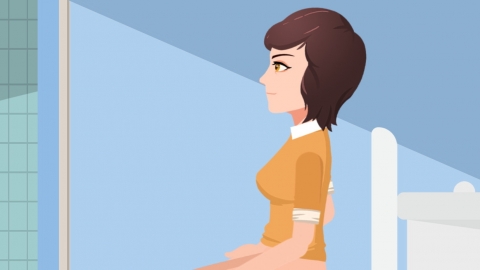What are the harmful effects of spending a long time on the toilet?
Generally, the harms of prolonged toilet sitting include inducing hemorrhoids, causing constipation, increasing the risk of anal fissures, affecting lower limb blood circulation, and causing knee joint injuries. The specific analysis is as follows:

1. Inducing Hemorrhoids
Prolonged sitting may obstruct the venous return and increase pressure in the veins of the anal and rectal area, leading to venous dilation and tortuosity, thus causing hemorrhoids. Initially, there may be only rectal bleeding; as the condition worsens, symptoms such as prolapse of hemorrhoids and pain may appear.
2. Causing Constipation
During defecation, the body establishes a defecation reflex. If one remains seated on the toilet for a long time, it may disrupt the normal defecation reflex, reducing the rectum's sensitivity to the pressure stimulation of feces. Over time, this may lead to difficulty in defecation and cause constipation.
3. Increasing the Risk of Anal Fissures
When constipated, dry and hard stools are difficult to expel, and excessive straining may cause a complete tear of the anal skin, resulting in an anal fissure. Anal fissures can cause severe pain, which worsens during bowel movements, and may also lead to bleeding.
4. Affecting Lower Limb Circulation
Long periods of squatting can compress the blood vessels in the lower limbs, impeding blood circulation and causing poor venous return, which may easily lead to numbness and swelling of the lower limbs. If this persists long-term, it may also increase the likelihood of developing varicose veins in the lower limbs.
5. Causing Knee Joint Damage
While squatting, the knee joints bear significant pressure. Prolonged maintenance of this posture may accelerate the wear and tear of the knee cartilage, leading to knee pain and stiffness, and increasing the risk of developing arthritis.
In daily life, it is important to control the time spent sitting on the toilet, ideally limiting it to 3-5 minutes, and cultivate good bowel habits. Regular moderate exercise, such as walking or jogging, can promote blood circulation and metabolism, contributing to overall health maintenance.





